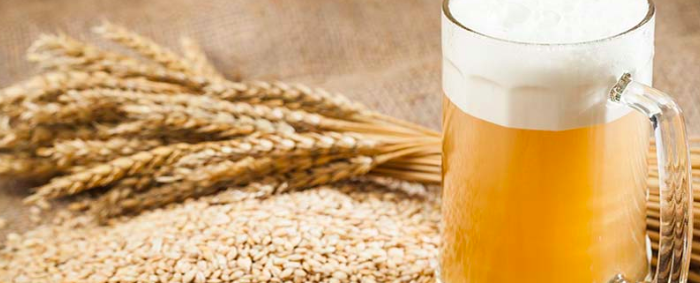
Short walk in June. At the edge of the road, a field as far as the eye can see, uniform, very uniform … Not a plant higher than its neighbor, not a lighter or less leafy. Is it for the sake of aesthetics and nostalgia for French gardens that this field is thus maintained? Well no. Because to look more closely, this is a barley crop. And from barley to beer, there are many quality requirements.
The promises of barley grain
The French drink an average of 30 liters of beer a year. And, besides the Belgian and German beers widespread in France, they have the choice between more than 2,000 national beers! “The first beers go back to 12,000 years before Christ, but the fundamentals have not changed,” says Hervé Marziou, a biologist. Beer is water, with a certain barley malt, a variety of yeast and an aromatic complement, mostly hops today. “ From these four commodities, the creativity of the brewers are inspired …
Like many agri-food products, beer is the result of a very elaborate manufacturing process. Among the closely monitored elements, the grain composition is at the forefront … The concentration of sugars, the content of enzymes that activate fermentation, the proportion of different types of starch, have a direct and decisive impact on the final quality. some beer.
Specific barley varieties
The criteria sought in the grain to guarantee the creation of beer depend, in fact, on the variety of barley used. We are talking about varieties of “malting barley”. Brewers and maltsters closely follow the creation of new varieties of malting barley … The brewer is the one who makes the beer; the malteur specializes in this phase of the process of transforming barley into beer that aims to create malt. ” Malting corresponds to this phase of germination of the grain, during which the starch contained in the barley is released and that the enzymes produced by the seedling allow the transformation of the starch into fermentable sugars, sugars that the brewer can then exploit. “ Analyzes Philippe Lehrmann, president of Malteurs de France.
Together, brewers and maltsters have established a short list of varieties suitable for satisfying foam drinkers. ” It takes 8 to 10 years to create a new variety of malting barley,”says Claire Perrot, barley coach for Florimond Desprez. The varieties that will be registered in the Catalog and will therefore have the authorization to be marketed already fulfill many criteria. Those who are next on this shortlist are really the best … By choosing to grow a variety of barley on this list, a farmer is certain to meet all the expectations of the malting and brewing industry. “
Guarantee quantity and quality
To feed a malt, a variety must be able to yield crops of sufficient importance. Delivery contracts are regularly of the order of a thousand tons. In addition, all barley grains harvested must be of the variety chosen, without any impurity. They must also be homogeneous and of the same caliber, in order to facilitate the processes of transformation. For perfect uniformity of germination, only large kernels (larger than 2.5 mm) are used to make malt. They will then be subjected to wetting steps to initiate germination and then to prolonged heating.
After a period of concentration of breweries, there is a recrudescence of the trade; new beers are born each year! “Traditionally, breweries were concentrated in the North and East of the country, says François Loos, president of Brasseurs de France. Today, the brewing regions are multiplying … Rhône-Alpes and Brittany in particular are now very active on this activity. “.